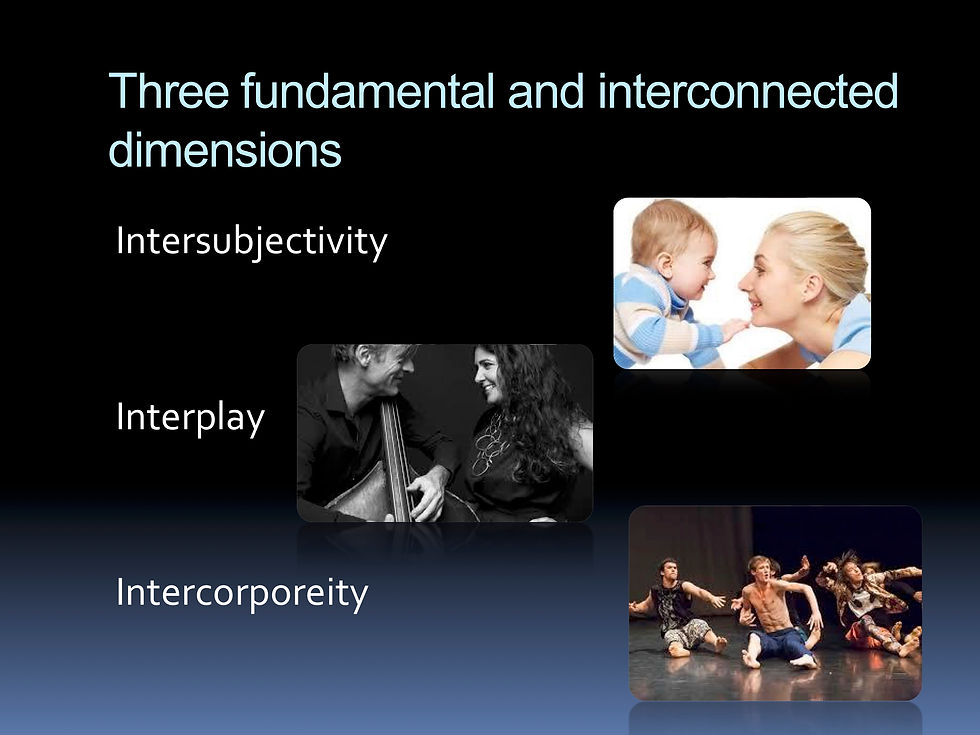
The Midifly System: from play to the interplay, a new road to intersubjectivity
Die Musiktherapie hat zum Ziel, die potenziellen und/ oder verbleibenden Ressourcen von Personen freizusetzen. Durch diese Ressourcen kann eine intra- und interpersonelle Integration entwickelt, und die Lebensqualität dank eines präventiven, rehabilitativen oder therapeutischen Prozesses verbessert werden.
Es gibt verschiedene Therapieansätze. MidiFly® bieten neue Möglichkeiten zur Untersuchung von Verhaltensweisen und therapeutischen Lösungen.
Insbesondere wurde es bei Patienten mit kognitiven Problemen wie Autismus, und anderen, degenerativen Erkrankungen getestet.
Im Musiktherapiesetting steht Midifly im Mittelpunkt. Patient und Bediener können interagieren, indem sie auf das virtuelle Gitter einwirken.
Das Gitter kann auf beiden Seiten verwendet werden. Diese Tatsache ermöglicht es Benutzern, sich selbst zu spiegeln und klanglich zu interagieren.
Für die Verwendung von MidiFly® ist eine Schulung erforderlich. Am Ende der Schulung erhält der Teilnehmer eine Zertifizierung, mit der er Midifly® nach dem Protokoll "MidiFly System" verwenden kann.
Das "Midifly System" ist ein Protokoll, das von den Musiktherapeuten Stefano Navone, Mariangela Lippolis und Stefano Ianne entwickelt wurde.
Alle Tests und Studien werden in unserem Hauptsitz in Valencia (ES) und in Schio (Italien) durchgeführt.
"Midifly technology: a new relational dimension in rehabilitation with music"
(Ianne S. - Navone S. - Lippolis M.)
Mit dem Aufkommen leistungsfähiger sensorgestützter Computertechnik und interaktiver Musiksysteme in Echtzeit wurde der Kombination von Musiktherapie mit Ultraschall, insbesondere in der neurologischen Rehabilitation, allmählich mehr Aufmerksamkeit gewidmet. Die theoretische Grundannahme der Autoren ist, dass die aktive Musiktherapie-Einstellung in der kontinuierlichen Korrelation von drei relationalen Dimensionen besteht: Zusammenspiel als Klanginteraktion, Interkorporalität als Körperspiegelung, und Intersubjektivität als Teilen emotionaler Zustände.
Das von den Autoren konzipierte "MidiFly-System" soll zum technologisch gestützten Bezugspunkt für diese Vision werden. MidiFly® projiziert einen virtuellen Infrarotbildschirms, auf dem sich Patient und Therapeut mit einfachen Handbewegungen gegenüberstehen und gleichzeitig vordefinierte Geräusche erzeugen können Dabei werden Körpersymmetrie und Spiegelung genutzt.
Im ersten Schritt wurden die Machbarkeit und die Akzeptanz dieses Ansatzes in einer vorläufigen klinischen Untersuchung bei Patienten mit Schlaganfall und Vernachlässigung geprüft. Wir haben festgestellt, dass die Anwendungsmöglichkeiten von MidiFly® zahlreich sind, insbesondere bei Patienten mit erworbenen Hirnverletzungen und motorischen Defiziten, wobei die theoretischen Grundlagen der intermodalen Wechselwirkungen und die räumliche Darstellung der Tonhöhe berücksichtigt werden.
Da der Musiktherapeut mit MidiFly® die Möglichkeit hat, die Zusammensetzung des Bildschirms auf vielfältige Weise einzustellen, kann er die funktionale Rehabilitation und die relationale Dimension in einer integrierten und personalisierten Therapie kombinieren, die sich auch auf die Wiederherstellung motorischer Fähigkeiten konzentriert. Synchronisation und räumliches Bewusstsein.




The Claudio Ciai Foundation is a non-profit based in Italy that aims to assist with the ongoing support and recuperation of victims suffering brain injuries or permanent disabilities as a result of accidents on the road and/or the workplace. Key goals include:
-
Providing a toolkit of valuable information and resources for families and friends, following four years of intense research and trial-and-error to find a cure and the most humane care possible for Claudio;
-
An information center sourcing and sharing news about innovative research, new technologies, hospitals and assistance centers in Italy and other countries across the globe. Assistance in understanding victim rights and associated compensation as well as financial support from the foundation as available and needed for victims in need;
-
Act as a helping hand and empathetic guide in moments when tragedy strikes to help families and friends of victims identify best solutions and next steps in moments of need, particularly when a loved one is still alive but without the ability to be autonomous.
The foundation is born from the reassurance that even the woes of sadness and suffering can be transformed into a positive energy of love and kindness, providing a beacon of hope for those in need in their darkest moments.







